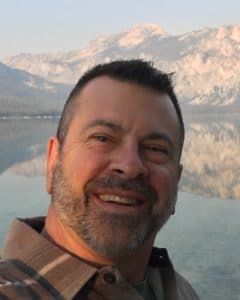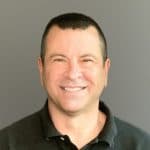Prayer and Physical Therapy
 Healthcare providers are climbing to new heights in understanding the complex relationship between prayer and physical therapy, and as a physical therapist at our Caledonia, MI clinic, I have seen it first hand. One of my earliest memories as a pre-PT student observing at a clinic was when a physical therapist, who had a fabulous reputation as a manual therapist, offered to pray with a patient who was struggling with pain related to her post-op spinal rehabilitation. Up to that point, I had never considered prayer as anything but a last resort. It was what you did when you exhausted all other realistic options in the material world. Obviously, passengers on the Titanic and General George Armstrong Custer shared my philosophy of prayer as a last-ditch tactical strategy. I can still remember how the patient’s face transformed as KC Hughes calmly led a thoughtful and nourishing prayer with this person, who was more crippled by her doubt than her post-op musculoskeletal sequelae.
Healthcare providers are climbing to new heights in understanding the complex relationship between prayer and physical therapy, and as a physical therapist at our Caledonia, MI clinic, I have seen it first hand. One of my earliest memories as a pre-PT student observing at a clinic was when a physical therapist, who had a fabulous reputation as a manual therapist, offered to pray with a patient who was struggling with pain related to her post-op spinal rehabilitation. Up to that point, I had never considered prayer as anything but a last resort. It was what you did when you exhausted all other realistic options in the material world. Obviously, passengers on the Titanic and General George Armstrong Custer shared my philosophy of prayer as a last-ditch tactical strategy. I can still remember how the patient’s face transformed as KC Hughes calmly led a thoughtful and nourishing prayer with this person, who was more crippled by her doubt than her post-op musculoskeletal sequelae.
At the time, unfortunately, I doubted KC’s skills and his ability to heal a patient with his hands. I didn’t appreciate the value of addressing the human spirit during treatment. After all, isn’t there some treatment technique or modality that exists for every single ailment that Salter’s classic orthopedic textbook could describe? It must then, simply be a function of leading a dedicated professional life and absorbing and perfecting a cornucopia of manual skills that can be applied in a timely fashion.
Fast forward 30 years and tens of thousands of patients later, I have come to fully realize and accept the strengths and shortcomings of my skills as a manual orthopedic physical therapist. Like many well-intended physical therapists early in their practice, I tended to put too much on myself when it came to both treatment failure and success. Success often fed my pride and led me to false conclusions about the correct path to the healing process. Failure brought humility and a fertile ground for learning. I thank God for my failures and how they helped shape my more comprehensive approach to patient care. In these moments, I was more prone to submit to God’s will and fully integrate prayer alongside my manual therapy, exercise treatments, and patient education, rather than use prayer as a last resort.
Does Prayer Actually Help in Physical Therapy?
In military speak, by integrating prayer, I was able to use a force multiplier, giving all of my training and treatments extra reach. In the earliest days of Hulst Jepsen Physical Therapy, Tom Hulst and I regularly engaged with our patients in discussions about the spiritual side of healing, where the discussion was welcomed and appropriate. This is not to say that prayer supplants a thoughtful, science-based approach to physical therapy training and treatment. As the great French philosopher, Etienne Gibson once said, “Piety is no substitute for technique”(1).
However, in light of the ever-growing body of knowledge in the science of pain, healthcare providers are climbing to new heights in understanding the complex relationship of how the human brain perceives pain based upon the perception of biological threats (2). Research shows the brain integrates incoming nociceptor (sensory organs outside of the central nervous system) signals with the patient’s previous experiences, beliefs, knowledge, and culture as it crafts its perception of pain intensity and ultimately, its responses to the signals (3). This makes a strong case for a holistic approach to musculoskeletal treatment. In other words, our brains have been shown to take a holistic approach to pain perception; therefore it would make some sense to reciprocate with a similar approach in our physical therapy treatments. 
Many physical therapy companies today tout that they consider the mind, body, and spirit when addressing the needs of their clients and that is wonderful. I cannot speak to the specifics of how other companies nurture the spiritual side of the human being in their approaches to care. However, I know well how the staff at Hulst Jepsen Physical Therapy have embraced the spiritual component of healing. Prayer seems to be a naturally calming modality for the human nervous system that has ratcheted up its sensitivity, in response to the fears and anxieties that can be associated with musculoskeletal pain. C.S. Lewis said it best: “Relying on God has to begin all over again, every day as if nothing had been yet done”(4).
I invite those readers who share this holistic philosophy of care or are simply curious about what Hulst Jepsen Physical Therapy can offer them, to contact us (Caledonia clinic) at 616.891.0600 or reach out to any one of our clinics via hjphysicaltherapy.com.
References:
1. Gibson, Etienne (1884-1978)
2,3. Gifford, L.S. Pain, the tissues and the nervous system. Physiotherapy, 1998 84: p.27-33
4. Lewis, C.S., Letters to Malcom: Chiefly on Prayer
